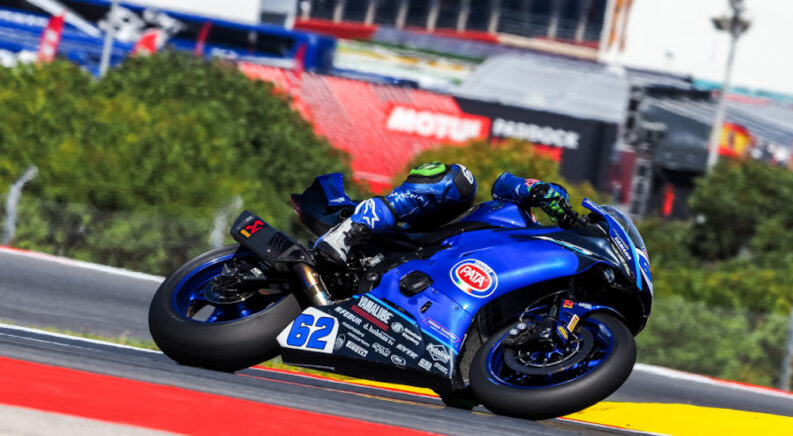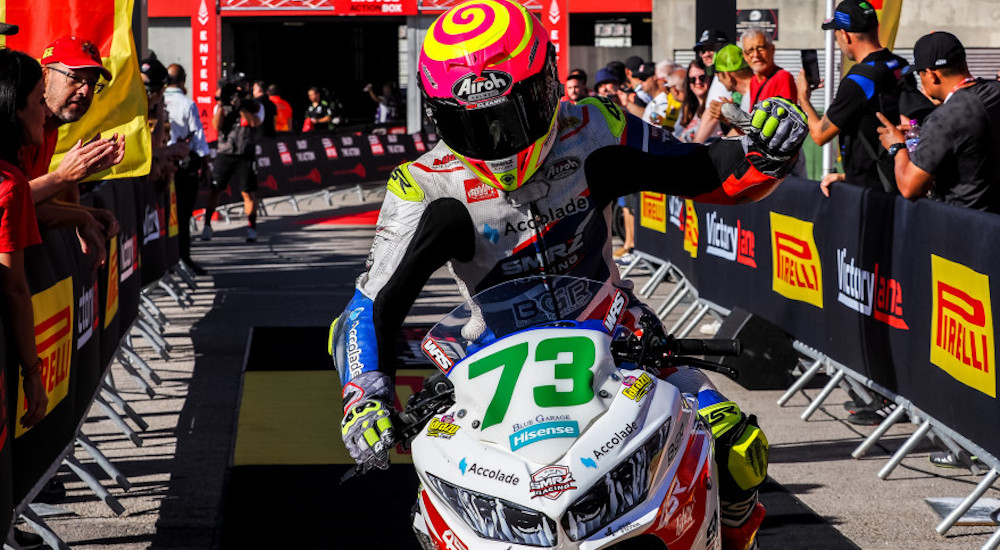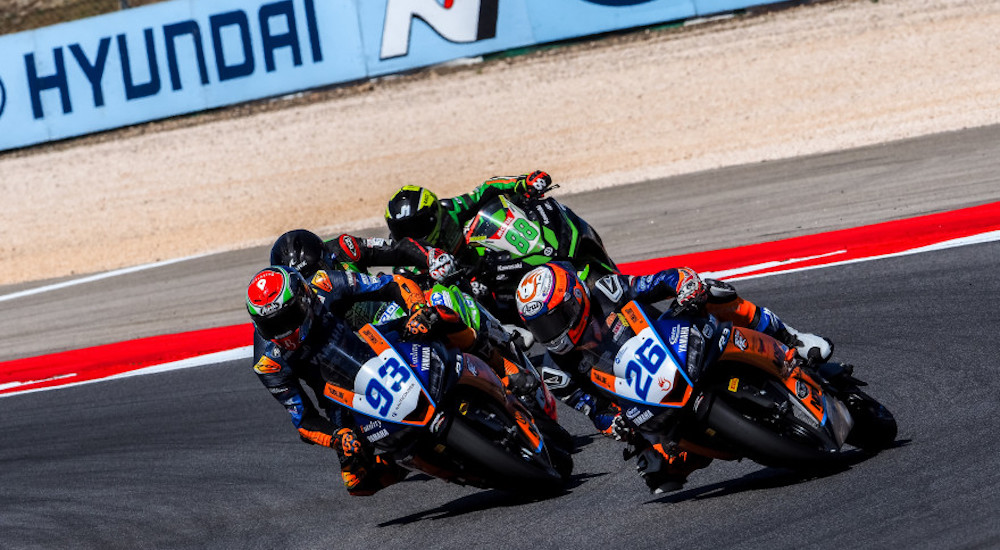Since its debut in 2019, Netflix’s “Formula 1: Drive to Survive” documentary series has been one of the streaming giant’s breakout hits. The show has not only been a ratings bonanza for Netflix, it has also helped to achieve what many thought was once impossible: turn historically disinterested Americans into F1 fans. Formula One has seen a 10% growth in its U.S. fan base since the show first hit Netflix in 2019, with 49.2 million Americans now counting themselves as regular F1 viewers.
The success of “Formula 1: Drive to Survive” begs the question: is a well-produced series with informative talking heads, polarizing team principals, and the occasional appearance from a Spice Girl all it takes to get U.S. viewers into motorsport? The series explains the complex F1 culture in layman’s terms, demystifying the sport and making it more accessible to the uninitiated. So, what other sports are ripe for the “Drive to Survive” treatment? Netflix’s “Tour de France: Unchained” has expanded the model into the cycling world. Still, if the streaming service wants to replicate its success in motorsport documentaries, World Superbike would be a prime candidate.
While we may not have a fraction of Netflix’s budget here at Car Life Nation, we will do our best to give you the low-down on one of the world’s most thrilling motorcycle-based racing series. Join us as we take a closer look at World Superbike, trace its history, and see how it stacks up against its main competitor in MotoGP.
First Laps
World Superbike, also known as the Superbike World Championship or WSBK, started in 1988, though the sport can trace its history back to one fateful race at California’s Laguna Seca Raceway in 1973. Organizers included a “Superbike Production” race as an undercard bout before the main event, setting in motion events that still reverberate throughout motorsport history. The new Superbike Production category pits heavily modified versions of commercially available road bikes against one another, with models like the Honda CB750F, Suzuki GS1000, and Kawasaki KZ1000 dominating early races. The modified bikes, often outfitted with high handlebars and stripped of their fairings, could be tweaked to deliver up to 140 hp, creating a thrilling, dynamic sport that continued to gain popularity throughout the 70s and early 80s.
This two-wheeled craze eventually resulted in the formation of the Superbike World Championship in 1988, with major manufacturers like Ducati, Kawasaki, and Suzuki immediately recognizing the sport’s potential as a marketing tool. Italian rider Davide Tardozzi would earn the first-ever WSBK podium, besting a competitive field of riders on his Yamaha-powered Bimota YB4 at Leicestershire, England’s Donington Park. Tardozzi would replicate this feat five times over the course of the 1988 season, cementing himself as one of the earliest icons in WSBK. Ultimately, the 1988 title would be won by American Fred Merkel on the back of his Honda RC30.
Early WSBK races were unique because organizers allowed two different types of engines, with two different displacements, to race against one another in the same category. While all competing bikes had to be based on available production models to the general public, riders could choose between two-cylinder, 1,000cc engines or a 4-cylinder, 750cc setup. This allowed a wider range of motorcycle brands to be represented in the series, with the V-twin set – Ducati, Honda, and Aprilia – riding right alongside 4-cylinder models from Yamaha, Kawasaki, and Suzuki.
Going Global
While ex-racer Steve McLaughlin and Fédération Internationale de Motocyclisme (FIM) are widely credited with founding WSBK, it was the influence of the Italian Flammini Group that would truly rocket the fledgling league to international notoriety in the early 90s. The Flammini Group’s dogged pursuit of television contracts and top-tier venues made WSBK more widely accessible than ever before, rivaling MotoGP in terms of viewership by the mid-90s.
There is also no discounting the impact of breakout American star rider Doug Polen, who would take home the WSBK title in his first year on the track in 1991 and repeat the feat the following season. Polen and his Ducati 888 would cement the Italian motorcycle brand as the name to beat in early WSBK history, with the company taking home six of the first 10 WSBK Championships.
The racing series has continued to evolve with the times, with organizers introducing several measures to ensure parity within the sport. 2004 saw WSBK adopt a controlled tire rule that saw all riders rounding the track in the same Pirelli rubber. This helped narrow the gap between teams while also leading to the developing of newer, better tires for the general public, a trend in the WSBK realm (more on that later). 2008 saw WSBK allow 2-cylinder bikes to increase their displacement to 1,200cc, a move designed to keep those in the V-twin set- namely Ducati- involved in the series.
So, what does the average WSBK race look like these days? WSBK follows a familiar three-day schedule not unlike the F1 series, with 13 rounds spread across the globe. The format has changed over the years, but since 2019, it has consisted of two regular races and a 10-lap sprint known as the Superpole Race. The schedule includes two 50-minute practice sessions on Friday and another 30-minute practice on Saturday, followed by a 25-minute Superpole Qualifying race determining the starting position for Saturday’s Race 1 and Sunday’s Superpoll Race. Sunday starts with a 15-minute practice session followed by a 10-lap Superpoll race that sets the final starting grid for the main event in Sunday’s Race 2. The first driver to cross the finish line receives 25 points, with trailing racers earning 20, 16, 13, 11, and down to 1 point for the 15th-place finisher. It might sound like a complex system, but it has worked out in a rather brilliant way that ensures every race impacts the final result.
High-Speed Workshop
Motorcycle manufacturers have also played an essential role in WSBK’s ascent. A WSBK title sells many bikes, motivating manufacturers to tap their best and brightest to gain any edge that could help bring home the crown. This symbiotic relationship between a manufacturer’s racing division and commercial operation has long been a part of WSBK, with the bikes produced for the track informing and advancing the technology found in consumer-grade products.
This brings us to the major difference between World Superbike and its main rival in, MotoGP. The bikes used for MotoGP – often referred to as the motorcycle equivalent of F1 – are built from the ground up by teams of engineers and designers from each motorcycle brand. These models might look similar to the bikes made available to the public, but they are packed with cutting-edge technology that justifies their $2 million price tag versus an average of $200,000 to $300,000 for a WSBK model.
By contrast, World Superbike models are the same bikes that can be purchased at your local Yamaha, Kawasaki, or Ducati dealer, albeit with plenty of expensive modifications. In theory, the average rider could transform their off-the-shelf bike into a World Superbike contender with enough time and money: a feat that one would struggle to replicate in the purpose-built world of MotoGP. If MotoGP is the two-wheeled version of F1, then World Superbike is something closer to a NASCAR-like stock car racing series. This might sound like it would lead to a massive disparity in terms of performance, but that is not the case. While MotoGP bikes are indeed faster, they only gain about 20 mph over their WSBK counterparts. That’s a negligible difference, especially when you consider the inherent thrill in rounding any track on the back of a bike at speeds exceeding 200 mph.
But stock vs. bespoke bikes are not the only difference between WSBK and MotoGP. Another important point of contrast would be the racing series’ respective budgets: WSBK has one, and MotoGP does not. This allows MotoGP teams to dream up all sorts of two-wheeled fantasies while WSBK engineers are significantly more limited with a set budget for their bikes, racers, and R&D projects. MotoGP bikes tend to be packed with high-end tech that would not make sense in a production model, such as super lightweight materials like carbon fiber and magnesium. While this gulf in funds is undoubtedly reflected in the performance of the two bikes, the accessibility of the WSBK models goes a long way in helping new teams enter the fray and allowing fans to connect with the series. That accessibility extends to the fan experience as World Superbike tends to be a little more up-close-and-personal than MotoGP from a fan perspective. Lower ticket prices and greater access to riders allow WSBK fans to forge closer ties with the brands they love, which is not always the case in the rarefied world of MotoGP.
MotoGP bikes are also not limited to engine tuning. However, the series has imposed rules around standardized ECUs (Engine Control Units) and software packages since 2016, while WSBK does not dictate the type of ECU or software that can be used. The MotoGP season is significantly longer than World Superbike’s schedule, with 19 races to WSBK’s 13. Some races take place on the same tracks, while others opt for circuits that better match the characteristics of each series’ entrants. Then there are the riders. WSBK is often seen as a training ground for the MotoGP circuit, with innumerable riders getting their start behind the handlebars of a production-based model before mounting the custom rides of MotoGP. In this way, WSBK offers a rare opportunity to see up-and-coming riders as they climb through the ranks, although calling it a farm system for MotoGP would be a little unfair.
Even without its own Netflix series, World Superbike looks to be on the rise. While he stops short of crowning WSBK as the new frontrunner, former British champion and Grand Prix rider Keith Huewe does think it’s trending in the right direction. “Is this the year where World Superbike starts to eclipse – in some marketplaces – the popularity of MotoGP?” asked Huewen in early 2023. “We’ve seen it before where in certain marketplaces, World Superbikes were above the then 500cc/early days of MotoGP.” Parity is also at an all-time high, with three riders on three bikes taking home the WSBK crown in 2020, 2021, and 2022. Brit Johnathan Rea remains the sport’s all-time winningest driver with six titles to his name, but up-and-comers like Spain’s Álvaro Bautista and Turkey’s Toprak Razgatlıoğlu are giving Rea a run for his money.
If you have ever thought about tuning into the world of World Superbike, now is the time. The series is more accessible than ever thanks to myriad streaming options, allowing race fans to catch some of the hottest action on two wheels no matter where they park their bike at night. While most of us will never experience the thrill of tearing through a racetrack on the back of a $200,000 bike, World Superbike allows riders to see some of their favorite models at their best and fastest. On top of being one of the world’s most exciting motorsports series, World Superbike also fulfills its role as a testing ground and showcase for new and emerging motorcycle technology. Viewers can tune in to get a sneak peek of some of the advancements they might see hitting the consumer market shortly, making World Superbike a unique mix of sport and advertisement that’s hard to beat from a manufacturer’s perspective. If you are curious about high-stakes racing of the two-wheeled variety, World Superbike is certainly worth a spin.






